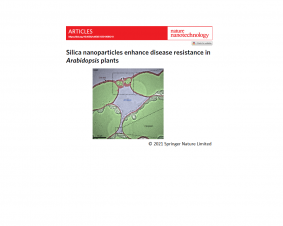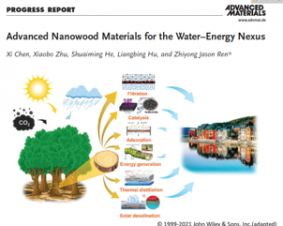 >
Spotlight November 2020: Nanotechnology in the public perception
>
Spotlight November 2020: Nanotechnology in the public perception
In November, we would like to draw your attention to a publication that examines public perception of the safety of nanomaterials in Austria.It shows, that although there is generally a rather positive attitude towards nanomaterials, there are different opinions on safety issues from different social groups. Further clarification seems necessary.
Despite the widespread use of nanomaterials in everyday life, consumer knowledge of the functions, benefits and potential risks of nanotechnology is still limited. As with any developing technology, their public perception has direct implications for future policy and needs to be taken into account by both academia and industry. Within the interdisciplinary research project “Nan-O-Style”, an online survey was conducted with an approach guided by the citizen science community. The main objective was to evaluate the current state of knowledge and attitudes towards nanotechnology in the general Austrian public and to determine how different socio-demographic factors can influence them.
Although Austrians generally have an optimistic and positive attitude towards nanotechnology, there are still concerns about its safety and possible risks. Participants expressed a strong desire for more information about nanotechnology and its applications, as well as for clear labeling and transparency of products containing nanomaterials. A consideration of various sociological factors was also made.
Original Publication::
Isabella A. Jouberta, Mark Gepperta, Stefanie Essa, Reinhard Nestelbacherb, Gabriele Gadermaiera, Albert Duschla, Arne C. Bathkec, Martin Himlya (2020) Public perception and knowledge on nanotechnology: A study based on a citizen science approach. NanoImpact 17. doi.org/10.1016/j.impact.2019.100201

Weitere Spotlights
Spotlight June 2021: Endotoxin – the reason for false-positive toxicity testing for advanced materials?
Advanced materials, but also nanomaterials are closely examined to determine whether they trigger biological effects that could be harmful to humans and the environment before they are used in products. This also includes such materials as titanium dioxide, which has been used in a wide variety of products for more than 50 years. A particularly […]
Read moreSpotlight December 2021: Silica nanoparticles improve plant disease resistance
The resistance of plants to various pathogens is often increased in agriculture with various chemicals (“fertilizers”). A new direction is being taken with the use of nanoparticles. These can be sprayed on the plants. In the present study, the model plant Arabidopsis was used to investigate whether silicon dioxide nanoparticles (SiO2) can increase resistance to […]
Read moreSpotlight September 2021: Wood, the raw material of the future?
One of the greatest challenges facing humanity is to produce clean drinking water under the given circumstances of global warming, population growth and increasing littering. In September, we would like to present a review article that believes one approach to solve this problem is the use of nanoscale wood. In the review, “Advanced Nanowood Materials […]
Read moreSpotlight January 2022: Methods, models, mechanisms and metadata
For the new year, we are presenting no “classic” paper here, but would like to point out an editorial: Methods, Models, Mechanisms and Metadata: Introduction to the Nanotoxicology Collection at F1000 Research. This editorial introduces the F1000Research Nanotoxicology Collection, where best practices can be collected in the form of original research reports, including no-effect studies, […]
Read more


